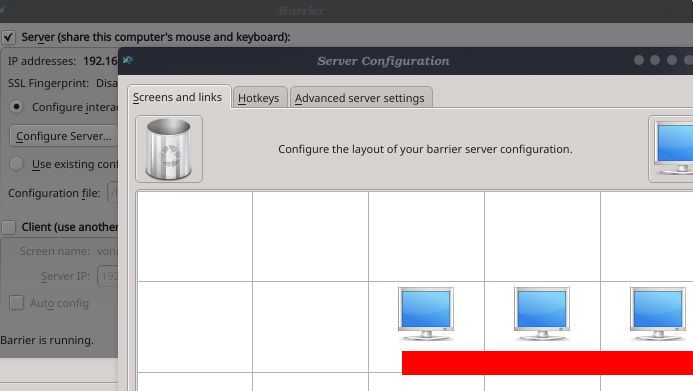
504e3afe6abb01e0c9465ee2ce4eb1d2
SOFTWARE- or network-based KVM (not the kernel "KVM") is a wonderful thing with a rich history* and present. For software KVM, in the Free software world there are several options (outside the realm of it there are dozens!) and the most famous one is explained in the above video as I've used it for over a decade on many machines and became somewhat of a 'guru' at it (out of necessity, I've even built things from source when I had difficulties).
barrier and synergy in conjunction (they're mostly based on the same code, but the latter, which is the original, became "Open Core", whereas the former is now the default in GNU/Linux distributions because it is Free software).


quicksynergy, but it may be mostly obsolete by now though older distros still have it in their repository. It makes setup a lot simpler and faster (hence "quick" in the name). It might be considered obsolete by now, but it still works. With command line tools it's also possible to configure everything to work in the background since startup (no GUIs required), but the learning curve is steeper. ⬆
___
* According to Wikipedia: "Ibus, a now defunct computer company, secured patent US5388032,[1] filed May 4, 1993, showing a KVM with a "discriminator" to connect to multiple computers. The "discriminator" is now known as a KVM switch." That's the source of the name. It is a concept that goes nearly 3 decades back. Many people still don't know about it and never saw it in action.